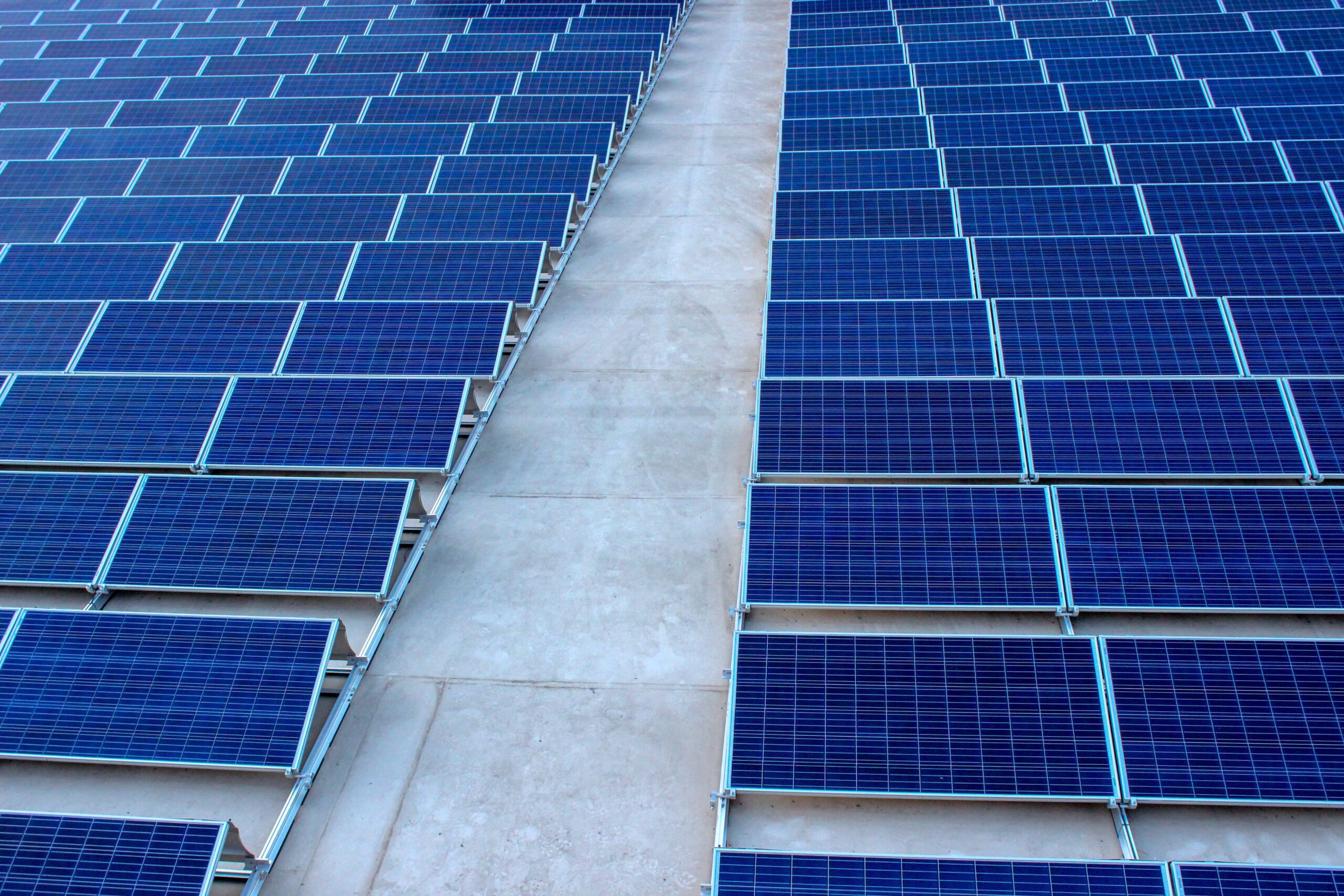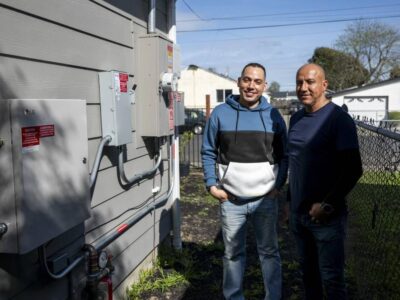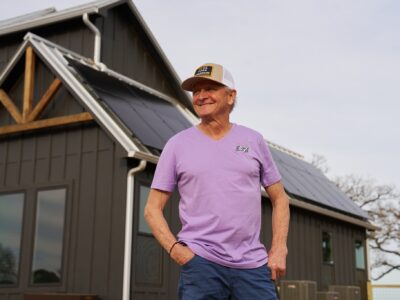(Bloomberg) —
It was wildfire season in Northern California, and the hills of Berkeley, California last fall were alive with the raucous sound of fossil fuel generators. As utilities repeatedly cut electricity to hundreds of thousands of households to prevent power lines from sparking destructive blazes, homeowners turned on the highly polluting devices to keep their lights on.
The California Air Resources Board calculated that in a 50-hour period during the October 2019 power shutoffs, an estimated 122,000 gasoline generators—the type typically used by households—emitted 24.3 tons of nitrogen oxide and 10.6 tons of particulate matter. Nitrogen oxide is a key ingredient in smog and particulate matter can cause heart and lung disease.
Forced blackouts aren’t the only reason people reach for generators—in places where hurricanes or blizzards are common, more people are buying these machines to weather power outages. The growing frequency of wildfires and other climate change-driven disasters is also making home backup power increasingly essential. That’s especially the case during a pandemic, when those working from home often don’t have the option of relocating to the neighborhood café if the electricity goes out. There are, however, alternatives to carbon dioxide-belching gasoline and diesel generators. Solar-powered lithium-ion battery systems are emissions free, silent, and unlike fossil fuel generators, can be used inside the house.
Go Small
If you just want to keep your phones, tablets, and laptops charged, there are a plethora of small solar-powered devices available for around $100. Just before the first power outage hit Northern California in early October last year, I sprung for a foldable 40-watt solar charger about the size of a magazine.
It did the job, but as blackouts stretched from hours to days and power outages threatened to become as perennial as California poppies, it became clear that I needed more power.
Electricity in a Box
Portable solar-powered lithium-ion generators with enough wattage to keep the wine chilled and brew the morning coffee have been around for years, but the market was largely focused on outdoor enthusiasts and those living off the grid.
No longer. “The last 18 months have been hockey stick growth,” says Bill Harmon, general manager of Goal Zero, a Utah company that makes lithium-ion generators that it calls power stations. “Demand has largely been directed at our larger power stations that can power huge portions of your home.”
He says wildfires, hurricanes, and the Covid-19 pandemic have driven sales of Goal Zero power stations with capacities of between 1,500 and 6,000 watts-hours and range in price from $2,000 to $5,000. Goal Zero, a subsidiary of NRG Energy Inc., also sells a kit to connect its larger generators to a home’s electrical panel. That allows the generator to back up four circuits to keep lights, refrigerators, and other key appliances powered during a blackout.
As the 2020 wildfire season approached, I acquired a 1,400-watt WiFi-enabled lithium-ion generator that weighs about 44 pounds and is the size of a small cooler. It sports 120-volt AC outlets, USB ports, and can be controlled from a phone app. The generator can be charged from a power outlet, a car battery, or from solar panels. I bought a 200-watt panel system that fully charges the battery in five to 10 hours.
My family was spared the planned blackouts that struck Northern California again this year. But during an unrelated four-hour power outage in November, the generator kept the coffee flowing, my laptop charged, and the internet running.
Batteries Go Big
Installing rooftop solar panels and battery storage, or adding a battery to an existing solar array, is the best if the most expensive way to ensure much of your home remains automatically powered during a blackout. Companies such as Tesla Inc., Sunrun Inc., and SunPower Corp. offer integrated solar-and-battery systems that can supply electricity indefinitely as long as the sun is shining.
“Demand for storage is growing even faster than solar, though demand for both is strong,” says SunPower CEO Tom Werner, adding that extreme weather around the country is driving sales of home batteries. “The idea of a blackout wasn’t that topical several years ago, but now you’re not only talking about blackouts but how long they may be.”
SunPower’s SunVault battery storage system costs between $12,000 to $25,000 depending on the capacity. About 25% of SunPower’s new residential solar customers are adding battery storage, a figure that rises to 50% in California, where the company markets SunVault as a hedge against planned utility blackouts.
“The penalty of losing power at home has gone up as it’s now your work environment,” says Werner.
Check for Rebates
Homeowners installing solar panels are eligible for a 22% federal tax credit while California offers a rebate for battery storage that pays about a quarter of the system’s cost.
No such incentives currently exist for portable lithium-ion generators, though California Air Resources Board spokesman David Clegern says that the agency will use $1.8 million of a 2020 legal settlement to supply solar powered generators to low-income residents of areas prone to wildfires and blackouts.
To contact the author of this story:
Todd Woody in New York at todd.woody@gmail.com
© 2021 Bloomberg L.P.





